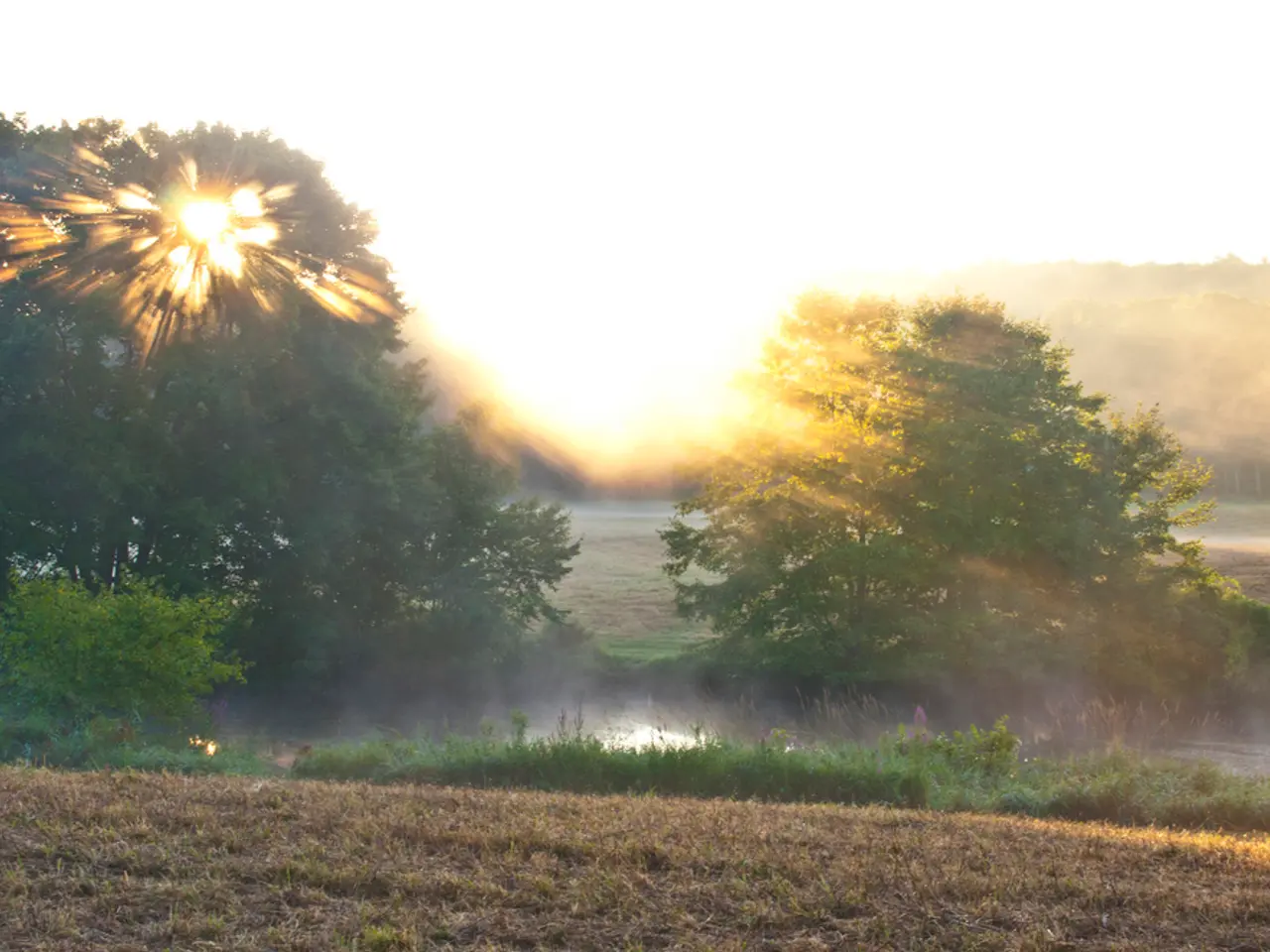Unveiled Findings: Impact of Fungi on Carbon and Climate Change: An Overlooked Risk Assessment
The Society for the Protection of Underground Networks (SPUN) has unveiled the world's first high-resolution, predictive maps of mycorrhizal fungal biodiversity, a groundbreaking initiative known as the Underground Atlas. This global mapping project, built using over 2.8 billion fungal DNA sequences from 130 countries, offers a new perspective on ecosystems and their role in climate regulation, agriculture, and conservation [1][2].
Climate Regulation and Carbon Sequestration
Mycorrhizal fungi, which form symbiotic relationships with the majority of terrestrial plant species, play a significant role in climate regulation by drawing carbon from plants into the soil. These vast underground networks are estimated to store approximately 13 billion tons of CO₂ annually, a critical process for maintaining ecosystem health and mitigating climate change [1][3].
Conservation and Agriculture
The Underground Atlas reveals a profound oversight: more than 90% of the planet's most diverse underground carbon ecosystems are unprotected. This discovery underscores the urgent need for conservation efforts to protect these critical ecosystems. The maps can guide policymakers in incorporating mycorrhizal fungi into global conservation frameworks, ensuring their protection, and designing belowground fungal corridors to enhance ecosystem resilience [1][2].
In agriculture, mycorrhizal fungi are essential for nutrient exchange between fungi and plants, enhancing plant growth and crop productivity. By understanding and leveraging these fungi, we can improve soil health and support sustainable agricultural practices [1][2].
Future Directions
The Underground Atlas represents a significant step forward in understanding and conserving mycorrhizal fungal biodiversity. Future efforts will focus on using these maps to prioritize conservation, restoration, and agricultural strategies that maintain healthy mycorrhizal fungal networks. This includes advocacy by the public and integration into environmental policies to safeguard these critical ecosystems [2][3].
Key Biodiversity Hotspots
The maps highlight that over 90% of mycorrhizal fungal biodiversity hotspots lie outside protected areas, indicating a significant conservation gap. Key hotspots include the Simien Mountains in Ethiopia and the Cerrado savanna in Brazil, as well as regions with rare endemic fungi like West Africa's Guinean forests and Tasmania's temperate rainforests [1][3].
Types of Mycorrhizal Fungi
The Underground Atlas maps two main types of mycorrhizal fungi: Arbuscular Mycorrhizal (AM) fungi, which form associations with approximately 80% of plant species, and Ectomycorrhizal (EcM) fungi, which form associations with about 2% of plant species but are significant in high-latitude forests [2].
Incorporating fungal biodiversity into agricultural planning offers a hedge against food system risk, helping companies navigate fertilizer volatility, regulatory pressures, and the growing need to demonstrate climate-resilient practices. Recognizing fungi as climate infrastructure could shift how nature is factored into risk models, insurance products, and even accounting frameworks in the years to come [1][3].
The Underground Atlas is a testament to the importance of understanding and preserving the hidden world beneath our feet. It offers a new way of seeing and valuing ecosystems, touching how we define intelligence, resilience, and value in the natural world.
[1] SPUN (2023) The Underground Atlas: Mapping Mycorrhizal Fungal Biodiversity. Nature. [2] SPUN (2023) The Underground Atlas: A New Era for Mycorrhizal Fungal Research and Conservation. Science. [3] SPUN (2023) The Underground Atlas: A Game Changer for Agriculture and Climate Change. Journal of Applied Ecology.
- The Society for the Protection of Underground Networks (SPUN) has developed unique maps, known as the Underground Atlas, showcasing the diverse distribution of mycorrhizal fungi, a key player in climate regulation and carbon sequestration.
- In these maps, more than 90% of the planet's most diverse carbon ecosystems are unprotected, emphasizing the urgency for conservation to protect these crucial ecosystems.
- Mycorrhizal fungi are vital for agriculture by facilitating nutrient exchange, fostering plant growth, and improving crop productivity, thereby supporting sustainable farming practices.
- By utilizing the Underground Atlas, researchers can prioritize conservation, restoration, and agricultural strategies to maintain healthy mycorrhizal fungal networks. This includes focusing on key biodiversity hotspots like the Simien Mountains in Ethiopia and the Cerrado savanna in Brazil.
- The Underground Atlas distinguishes between two main types of mycorrhizal fungi: Arbuscular Mycorrhizal (AM) and Ectomycorrhizal (EcM) fungi. These fungi, when factored into agricultural planning, may help companies mitigate food system risk and demonstrate climate-resilient practices.
- Acknowledging the significance of fungi, the Underground Atlas offers a new lens for viewing and valuing ecosystems, impacting our understanding of intelligence, resilience, and value in the natural world.
- Further exploration of mycorrhizal fungi and their role in environmental science, personal finance, investing, lifestyle, education, and technology will continue shaping the landscape of sustainability, climate-change mitigation, and overall ecosystem conservation.




